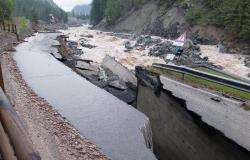L’AQUILA. The delays in the reconstruction of the Ater public housing and the degradation that some neighborhoods of the city are experiencing in the absence of a redevelopment and recovery project, at the center of an intervention by Francesco Marrelli (CGIL), Oleander Geppino (Sunya) b Antonio Perrotti (Coordination of Erp Tenants. «Empty and degraded neighborhoods are the clear manifestation of how people, families and communities make cities and where there is no reconstruction planning, no housing use of available properties, no public services to provide to people, the territories become empty and marginalization and social disintegration increase».
«It is necessary», we read in a note, «to overcome the current attitude aimed at extemporaneous recovery and relaunch ideas without real planning consistent with the needs of the community, seriously and coherently addressing housing problems, starting from the tenants, by students, by the fragilities that have manifested themselves in recent years, overcoming delays and inefficiencies in the reconstruction of public and popular housing so that people can be recognized as having the right to live. We need to resume an organic, transparent and participatory reasoning that outlines a functional and practicable role for everything already achieved with a view also to reducing settlement dispersion which, among other things, is uneconomical for families and the administration”. Reasons why «a recovery plan for the few nuclei of the Houses/Map Plan that can be repurposed is requested, returning all those in conflict with hydrogeological protection and seismic microzonation to agricultural land; as well as a targeted recovery of the few “temporary houses” that can be remedied to be stitched back into the existing and legitimate urban fabric”. Also called for is “the organic recovery of all Ater accommodation with qualified low maintenance materials and above all by introducing efficient technologies for alternative energy”. For CGIL, SUNIA and ERP Tenants Coordination, “a plan is needed to welcome students by recovering complexes and buildings near university facilities or in the historic centre”. Finally Valle Pretara. «We work concretely to integrate and insert new ideas such as the car park with crossing located on the slopes and a business, sports and energy center in the Ater area, which appears to be the most central to the urbanizations to the north of the city. To ensure concrete implementation of these objectives, it is necessary”, say CGIL, SUNIA and ERP tenant coordination, “to reactivate a discussion with the Ministry, the Region, ATER and USRA so that a functional shared timetable can be created which leads, to as soon as possible, to the reconstruction of all remaining accommodation with the necessary technological/energy adaptation”.
©ALL RIGHTS RESERVED.
For Latest Updates Follow us on Google News






